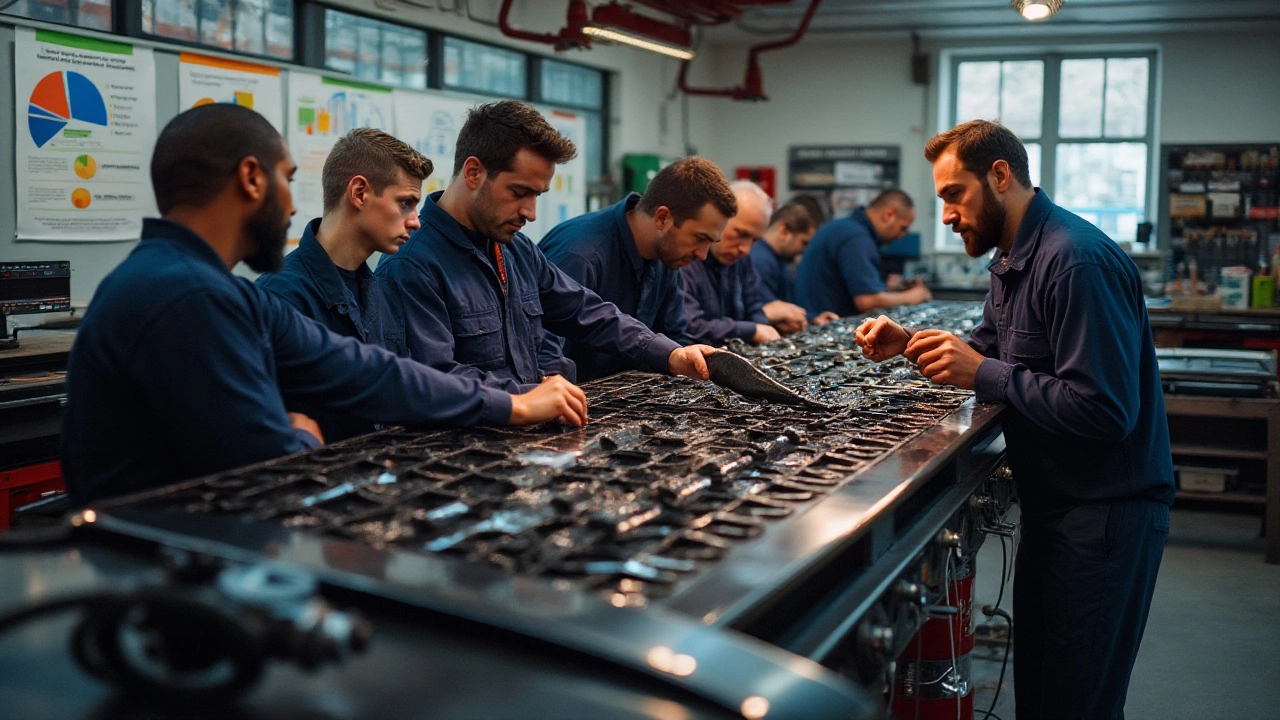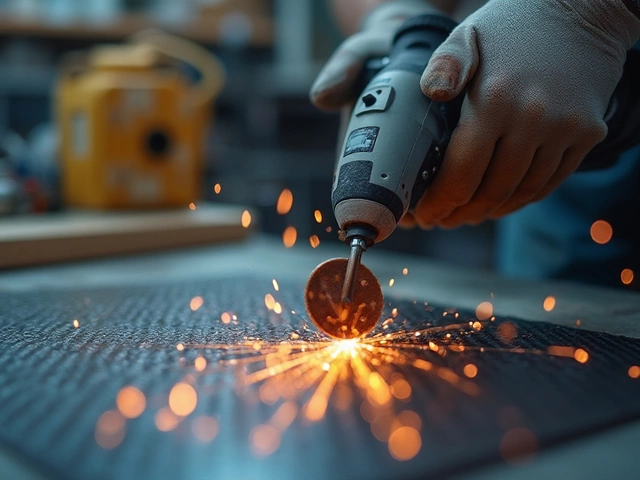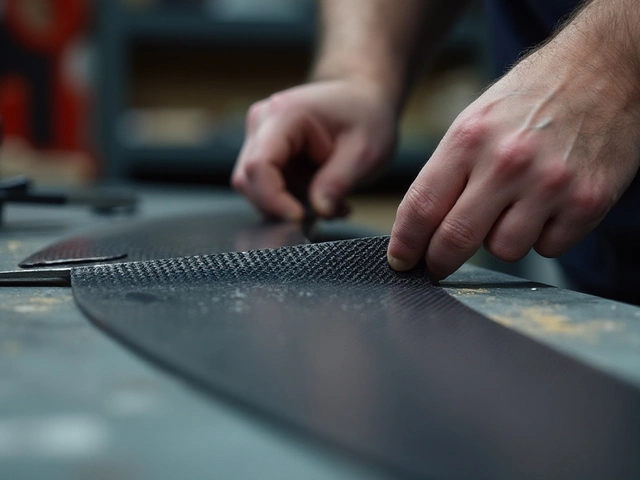When it comes to automotive innovations, carbon fiber has captured the imagination of car enthusiasts and professionals alike. Known for its sleek aesthetics and impressive strength-to-weight ratio, carbon fiber has become a top choice for car spoilers and other modifications. But is this material all it’s cracked up to be?
For those captivated by the allure of carbon fiber, it’s essential to delve into the not-so-glamorous side of this advanced material. From environmental concerns related to its production to the high costs associated with its maintenance, carbon fiber presents a number of challenges that don’t always mesh with its high-tech image. Whether you're a seasoned automotive expert or a curious newcomer, understanding these nuances will ensure informed decisions when it comes to choosing the right material for car spoilers.
- The Appeal of Carbon Fiber in the Automotive Industry
- Environmental Impact of Carbon Fiber Production
- Cost and Maintenance Implications
- Durability Concerns in Real-World Conditions
- Alternatives to Carbon Fiber Spoilers
The Appeal of Carbon Fiber in the Automotive Industry
Carbon fiber has risen through the ranks of automotive materials, celebrated for its spectacular strength-to-weight ratio. In the quest for performance, weight is a persistent adversary, and carbon fiber provides a compelling solution. Its significantly low density compared to traditional materials like steel allows vehicles to achieve higher speeds with less energy consumption. This not only enhances performance but also contributes to improved fuel efficiency. These attributes make carbon fiber ideal for car modifications, especially spoilers, which require durability without adding unnecessary weight.
The aesthetic allure of carbon fiber also cannot be dismissed. Its intricate weave pattern exudes a sophisticated, high-tech look that has become synonymous with luxury and high-performance vehicles. In a world where appearance often speaks louder than words, the visual impact of carbon fiber can't be understated. Its application in car design has rendered it a symbol of prestige and cutting-edge technology. Enthusiasts who invest in carbon fiber not only crave the performance boost but also the head-turning effect it provides.
One of the more intriguing aspects of carbon fiber is its versatility. It can be molded into virtually any shape, opening the door for innovative designs that would be impossible with metals. This flexibility allows engineers and designers to push boundaries, crafting aerodynamic shapes that deliver optimal performance. The ability to create complex geometries enhances the appeal of carbon fiber in the automotive industry, making it the go-to choice for bespoke car features.
To understand the widespread admiration for carbon fiber, we must consider its origin in aerospace engineering, where the material was initially developed to withstand extreme conditions. "Its evolution from aerospace to automotive highlights a blend of cutting-edge technology and creative engineering that defines modern car manufacturing," remarks a notable automotive expert in an industry publication. Such crossover demonstrates carbon fiber’s exceptional resilience and adaptability, setting it apart from conventional materials.
In a bid to keep pushing the envelope, car manufacturers are continually advancing their use of carbon fiber. With new techniques in carbon fiber production, costs are gradually decreasing, broadening its accessibility. This trend suggests an exciting future where the material’s benefits can be leveraged in a broader range of vehicle types, potentially even mass-market cars. The automotive industry stands on the brink of a carbon fiber revolution—a promise of efficiency and innovation harmoniously intertwined.
Environmental Impact of Carbon Fiber Production
Carbon fiber production, despite its innovative applications in automotive materials like spoilers, has sparked significant environmental concern. The manufacturing process is an intensive one, starting from acrylic fiber, which undergoes multiple phases, including stabilization, carbonization, and surface treatment. These stages are energy-draining, requiring high temperatures that rely heavily on fossil fuels. Experts assert that the carbon footprint of producing one kilogram of carbon fiber is notably large. These emissions contribute to greenhouse gases, making it a topic of scrutiny among eco-conscious communities.
One of the primary challenges lies in the raw materials used. The precursor materials, often based on acrylonitrile, are derived from petroleum, introducing additional environmental burdens right from the outset. The chemical processes involved emit volatile organic compounds (VOCs) and other toxic pollutants. Manufacturing plants must contend with significant waste management issues, as the residue cannot be easily recycled or disposed of without environmental repercussions. This adds layers of complexity to achieving sustainability goals.
Another often overlooked aspect is the difficulty in recycling carbon fiber composites. Unlike metals, which can be melted down and reused with relative ease, carbon fiber composites resist traditional recycling techniques. Current methods for recycling are either inefficient or prohibitively expensive, often leading to an end-of-life scenario where these materials are incinerated or landfilled. Both of these options pose their own environmental hazards. Researchers are exploring new technologies for recycling, but the road to a fully sustainable model remains long.
Energy consumption during the production process does not only affect emissions but also the lifecycle energy efficiency of carbon fiber products. When compared to traditional materials like steel or aluminum, the energy required for carbon fiber can outweigh the benefits unless the resulting lightness significantly reduces a vehicle's fuel consumption over time, thereby compensating for its initial energy cost. A recent study cited that, while carbon fiber offers potential fuel savings, the upfront environmental costs make it a less viable choice for mass adoption in everyday consumer vehicles.
"The production of carbon fiber materials is a double-edged sword. While beneficial for lightweight applications, its energy demands and emissions call for an urgent re-evaluation," notes Dr. Emily Zhao, a leading researcher in sustainable materials science.
Nations are grappling with these environmental challenges in regulatory ways as well. Legislative measures aimed at reducing industrial emissions are indirectly affecting how carbon fiber is produced. The automotive industry, as major users of this material, are increasingly expected to find balance between performance benefits and environmental responsibilities. Pursuing alternative materials or improving existing processes to curb emissions might be in their future development plans.
Given these environmental concerns, the latest trends in the industry are moving towards hybrid composites or those that marry natural fibers with carbon structures, which may offer a compromise between efficiency and ecological impact. This innovative approach suggests a shift in how car modifications and materials may evolve to meet both performance and sustainability demands. While carbon fiber remains a staple in high-performance car manufacturing, evolving environmental scrutiny might influence a future pivot towards greener production practices and alternatives.

Cost and Maintenance Implications
When considering carbon fiber for car modifications, it’s crucial to take into account the financial implications, as the impact on one's budget can be significant. Carbon fiber parts, including spoilers, come with a hefty price tag compared to traditional automotive materials like aluminum or steel. This cost is driven by several factors; the manufacturing process of carbon fiber is labor-intensive and requires expensive equipment and raw materials. Engineers weave small strands of carbon into a fabric, which is then heated to create a composite that’s both lightweight and astonishingly strong. This means you're paying for advanced technology and the skills needed to transform raw carbon into something beautiful and functional.
Maintenance is another monetary aspect drivers must consider. Despite its image of being impervious, carbon fiber is not indestructible. Cracks and chips can occur from rock impacts, minor fender benders, or even just the rigors of daily use. Repairing such damage is not a straightforward task. Often it requires specialized tools and knowledge that only a select number of technicians possess. This scarcity of expertise naturally drives prices higher. A simple repair that could cost a few hundred with conventional materials can escalate into the thousands with carbon fiber. This economic reality can be a considerable deterrent for potential buyers.
Persistent in today’s discussion is the notion of upkeep over the lifespan of a carbon fiber component. While it doesn’t rust like steel, it’s susceptible to different challenges such as UV degradation if not properly finished or coated. Regular inspections and maintenance can add to the cost. In a market where aesthetics and optimal performance are intertwined, maintaining the glossy sheen of a carbon fiber spoiler often involves specialized products specifically designed for this material. Moreover, finding these products can sometimes be a chore, especially in regions where carbon fiber is not mainstream.
"The initial allure of carbon fiber is often overshadowed by its long-term costs, turning what many consider an investment into a financial strain," affirms automotive analyst Joanna Martin.
Stats can be revealing, showing the stark contrast in repair costs compared to traditional materials. For instance, a report from a major automotive repair association noted that carbon fiber repairs can cost up to four times more than those for regular materials. Understanding these figures can guide enthusiasts looking to strike a balance between their passion for performance and practical budgetary considerations.
Durability Concerns in Real-World Conditions
When it comes to using carbon fiber for car spoilers, many enthusiasts are in love with its allure, combining strength with lightweight characteristics. However, this relationship can be tested by the realities of real-world driving. Despite its strength, carbon fiber can be surprisingly susceptible to damage. While it's tougher than many traditional materials, certain conditions can expose weaknesses. One might be surprised to learn that carbon fiber, when hit at specific angles or subjected to substantial stress, can crack or shatter. These vulnerabilities are amplified in urban environments where minor collisions or rough roads are not uncommon.
On top of that, carbon fiber's toughness doesn't make it immune to the forces of nature. Exposure to direct sunlight over extended periods can cause the material to become brittle, leading to further durability concerns. It's worth remembering that, unlike metals, which may bend or dent, carbon fiber tends to splinter. When this happens, repairs are not straightforward and often require specialized professionals, leading to increased costs and downtime. According to a study by the Institute of Materials Science, repeated exposure to UV rays without adequate protective coats can reduce surface integrity by up to 20% over a decade.
Moreover, carbon fiber exhibits a significant downside when considering its sensitivity to extreme temperatures. While it can withstand high temperatures up to certain limits, sudden changes or consistent exposure to extreme conditions can compromise its structural integrity. This challenge often comes into play when vehicles are exposed to the rigors of motorsports or extreme climates. Under these circumstances, the durability of carbon fiber spoilers can be tested severely, possibly leading to unexpected failures. A well-documented case involved racing teams who had to replace components more frequently due to these very concerns, as they simply couldn't afford the unpredictability during high-stakes competitions.
"Carbon fiber components, while revolutionary, require a specific handling knowledge. Their durability is exceptional when properly managed, yet real-world conditions, particularly in motorsports, test these limits frequently," shared Dr. Emily Trent, an expert in automotive materials science.
Aside from environmental and physical threats, maintenance practices significantly contribute to the long-term durability of carbon fiber. Improper cleaning techniques, such as using harsh chemicals or abrasive materials, can erode the protective layers on the surface. This deterioration, in turn, exposes the underlying fibers to mechanical stress and environmental degradation. A comprehensive understanding of maintenance practices alongside specialized cleaning materials and coatings is therefore crucial to preserving the strength and aesthetics of carbon fiber spoilers. Regular inspections and timely interventions can save both money and prevent potential performance hindrances.

Alternatives to Carbon Fiber Spoilers
When it comes to choosing the right spoiler for your car, it's important to look beyond the allure of carbon fiber. Although it’s popular for its strength and lightweight properties, other materials offer distinct advantages that can be more suitable depending on your needs and preferences. One of the most common alternatives is fiberglass. Known for its affordability and ease of manufacture, fiberglass spoilers have been a mainstay in the automotive industry. They may not boast the ultra-light nature of carbon fiber, but they offer practical durability and can be more readily repaired in the case of damage.
Another interesting option to consider is ABS plastic. This material delivers a solid balance between strength and weight, suited for those who prioritize toughness and longevity without stretching the budget too far. ABS plastic, unlike carbon fiber, is less prone to cracking under pressure. This makes it a great choice for daily-driven cars that frequently encounter the perils of urban driving. Throw in the fact that it can be molded into various shapes, allowing manufacturers to create intricate designs, and you have a compelling case for ABS plastic spoilers.
Aluminum should not be left out of the conversation. As a strong yet adaptable metal, aluminum spoilers give you that sleek, metallic look some car enthusiasts crave. Although slightly heavier than other spoiler materials, the trade-off is that they often withstand adverse weather conditions more effectively. In racing applications or high-performance scenarios, their durability becomes a significant advantage. And while they may not be as popular in the contemporary scene, aluminum has stood the test of time and continues to be relevant.
A relative newcomer is the use of composite materials, a mix that often includes polymers and other synthesized substances. These composites allow for impressive flexibility and a favorable balance between weight and rigidity. The added bonus is the ability to incorporate modern technology, such as dynamic aero components, which adjust in real-time to improve aerodynamics. While still developing, this area looks towards future innovations that could redefine the industry standard.
Developments like 3D printing are also paving the way for custom spoilers tailor-made to fit specific vehicular needs. This technology allows for unprecedented personalization, but it's still in early stages when it comes to mainstream adoption in the automotive world. Imagine, though, a day when you can design, print, and install a spoiler perfectly matched to your car’s curvature and styling—all without leaving your garage.
Lastly, cost is always a factor in any car modification decision. Fiberglass and ABS plastic tend to be much cheaper to produce and install than carbon fiber. They are often more forgiving to new owners and those who might not have a sapphire-tight budget yet want to make a bold automotive statement. An article in "Car and Driver" mentioned,
"When weighing the options, one should consider not just the up-front cost but also the long tail of potential maintenance and replacement."This wisdom rings particularly true as we explore the wide array of materials available for car spoilers.




